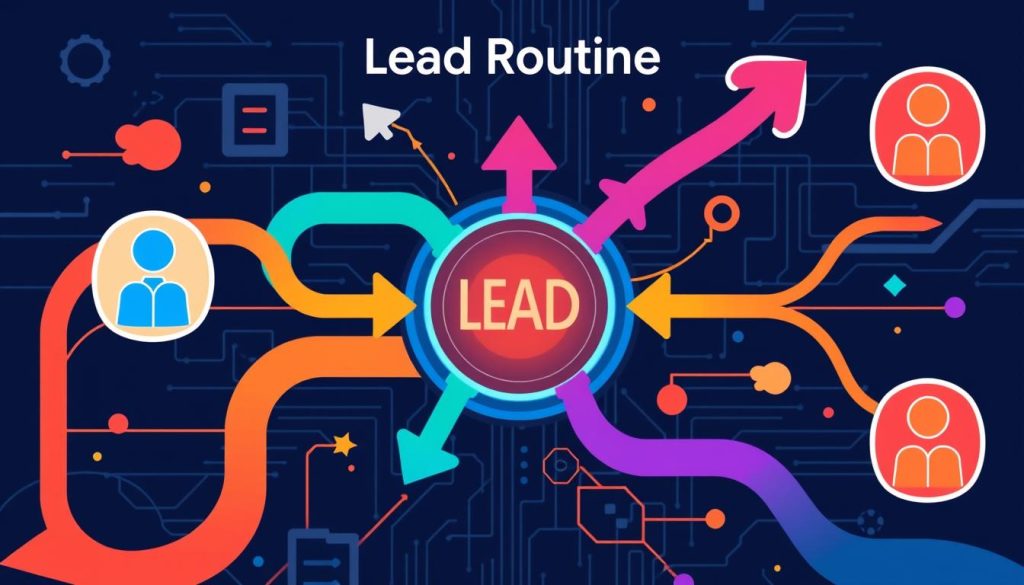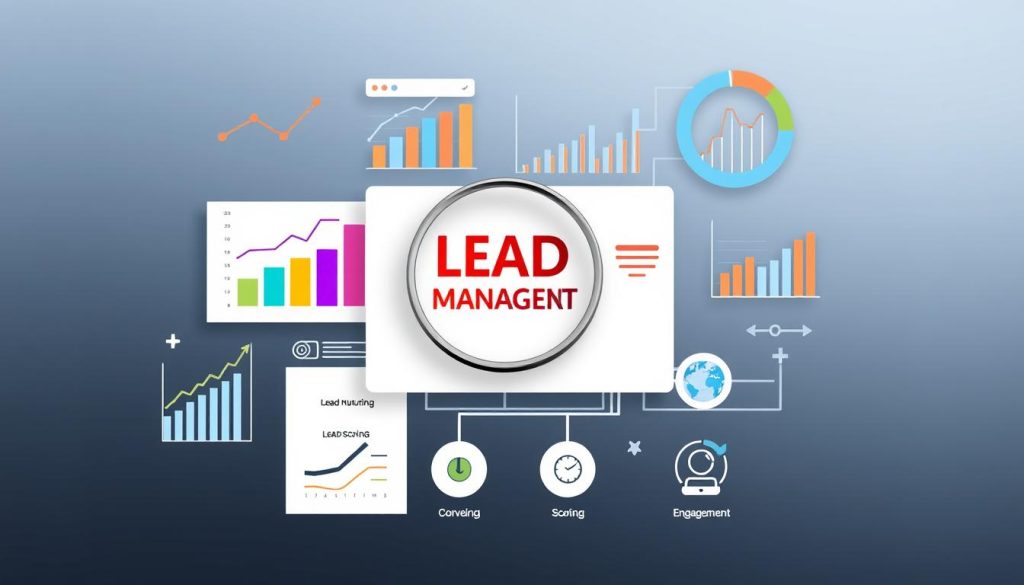Leads are the seeds of revenue. They form the core of your sales pipeline. Lead management is crucial for maintaining a healthy, predictable pipeline.
It’s the process of attracting, qualifying, and converting prospects into customers. This covers the entire customer journey: problem awareness, solution awareness, and product awareness.
Most companies use a marketing funnel for lead management. This typically includes lead generation, engagement, nurturing, and conversion.
A solid lead management process makes your pipeline more predictable. It helps you track and nurture potential customers, keeping them aware of your brand.
Movix.ai can boost your traffic through Reddit. It finds ideal conversations to mention your product and drafts replies.
This tool can drive more leads and engage your target audience. It taps into one of the most active online communities.
Key Takeaways
- Lead management is the key to a healthy sales pipeline
- It covers the entire customer journey from problem awareness to conversion
- A marketing funnel is a common framework for lead management
- Movix.ai can help you leverage Reddit to drive more traffic and leads
- An effective lead management process makes your pipeline more predictable
Introduction to Lead Management
Lead management is a process that turns prospects into loyal customers. It covers the entire customer journey, from problem awareness to product awareness. Most businesses use a marketing funnel to manage leads effectively.
This funnel typically includes lead generation, engagement, nurturing, and conversion. These steps help businesses track and guide potential customers through their journey.
What is Lead Management?
Lead management makes your sales pipeline more predictable. It helps you track and nurture potential customers, keeping them engaged with your brand.
This process ensures potential buyers stay aware of your products or services. It also keeps them excited about your solutions to their problems.
The key components of lead management include:
- Lead Generation: Attracting potential customers through various marketing tactics.
- Lead Qualification: Assessing which leads are most likely to convert.
- Lead Nurturing: Engaging leads with personalized communication and content.
- Lead Conversion: Turning qualified leads into paying customers through effective sales strategies.
A lead management system helps businesses improve their marketing funnel. It boosts the efficiency of lead generation and customer acquisition efforts.
“Effective lead management is the foundation for sustainable business growth and profitability.”
The Importance of Lead Management
Effective lead management is vital for business growth. It provides insights into customer behavior and helps adapt strategies. Companies can thrive in tough economic times by understanding lead management’s importance.
Lead management allows tracking of customer behavior shifts. This knowledge helps revenue teams prepare for disruptions. It also helps refine lead generation practices, ensuring a steady flow of qualified leads.
Studies show companies with strong lead management see a 133% revenue increase. Revenue teams can focus on customer conversion to drive growth. They can use insights from lead management to maximize their investment returns.
“Lead management is the key to unlocking sustainable revenue growth. By understanding customer behavior and adjusting our strategies accordingly, we can weather any economic storm and consistently deliver value to our clients.”
The importance of lead management is clear in today’s market. It empowers revenue teams with the right tools and strategies. Businesses can navigate complex markets and enhance customer experiences with proper lead management.
Long-term success is achievable through effective lead management practices. Companies can stay ahead of the competition by focusing on this crucial aspect. Continuous improvement in lead management can lead to sustained growth and profitability.
| Key Benefit | Impact |
|---|---|
| Insights into customer behavior | Ability to adapt strategies during economic turbulence |
| Reliable stream of qualified leads | 133% increase in revenue for companies with effective lead management |
| Focus on customer conversion | Increased return on investment for revenue teams |
Lead Generation Strategies
Lead generation is vital for business success. There are two main ways to get new leads: inbound and outbound. Each method has its own benefits and targets different audiences.
Choosing the right mix of strategies is crucial. It helps businesses grow and reach their goals effectively.
Inbound Lead Generation
Inbound lead generation attracts potential customers through organic channels. It uses content marketing and email campaigns to reach interested prospects.
These leads are often more engaged and ready to buy. They’ve actively looked for solutions to their problems.
Inbound methods allow for better personalization and easier result tracking. They also reach a more specific audience.
Outbound Lead Generation
Outbound lead generation involves reaching out to prospects directly. It uses paid marketing and cold outreach to connect with potential customers.
These leads may not know your brand yet. They need more nurturing to convert.
Outbound methods can reach a wider audience. However, they’re less personal and harder to measure.
Inbound lead generation strategies and outbound lead generation tactics both have their place. Using organic growth channels and paid marketing campaigns together works well.
This combo helps businesses personalize their audience reach effectively. It also makes it easier to measure the impact of their lead generation efforts.
“The key to successful lead generation is finding the right balance between inbound and outbound strategies, tailored to your unique business needs and target audience.”
Lead Capture and Tracking
Lead management relies on two key elements: lead capture and lead tracking. These processes help identify potential customers and manage their data effectively.
Lead capture uses forms and tools on your website to collect vital information. This data includes contact details, interests, and pain points. Gathering this info helps qualify leads and improve your strategy.
Lead tracking monitors lead activities from first contact to final sale. It helps manage marketing channels like blogs and social media campaigns. This insight allows you to spend your budget on the most effective lead sources.
A strong lead capture and tracking system enables data-driven decisions. It helps optimize marketing efforts and boost conversion rates. By combining these components, you can transform your lead management process.
This improved system can unlock new growth opportunities for your business. It turns lead management into a powerful tool for success.
| Lead Capture Strategies | Lead Tracking Techniques |
|---|---|
|
|
“Effective lead capture and tracking are the keys to unlocking the full potential of your lead management efforts.”
![]()
Lead Qualification and Scoring
Lead qualification and scoring are vital in finding the best prospects. They help businesses focus on valuable opportunities. By evaluating leads, companies can identify potential paying customers.
The Lead Qualification Process
The lead qualification process involves several key steps:
- Lead Segmentation: Dividing leads into categories based on interest and buying readiness. This includes “cold,” “warm,” and “hot” lead classifications.
- Lead Scoring: Assigning values to leads based on demographics, behavior, and engagement. This helps prioritize qualified leads for the sales team.
- Lead Prioritization: Focusing on high-value leads to maximize conversion chances. This ensures the most promising opportunities are addressed first.
- Lead Nurturing: Providing personalized content to guide leads through the sales funnel. This builds trust and moves them towards a purchase decision.
Effective lead qualification and scoring boost sales productivity and efficiency. They speed up lead response times and improve overall lead management.
These practices drive better results and stronger returns on investment. Businesses can focus their efforts where they matter most.
| Lead Qualification Criteria | Lead Scoring Factors |
|---|---|
|
|
“Effective lead qualification and scoring are essential for maximizing the productivity of your sales team and driving revenue growth.”
Lead Nurturing and Conversion
Lead management’s power lies in nurturing and converting prospects. Only 3% of prospects are ready to buy now. The other 97% have potential if nurtured properly.
Lead nurturing guides prospects through the sales funnel. This happens through marketing communications like retargeting campaigns and engaging emails. Companies that excel at nurturing generate 50% more sales-ready leads.
These companies also see a 33% lower cost per lead. Lead conversion is the final step in this journey. The marketing team hands over marketing qualified leads to sales.
The sales team then works to convert leads into customers. This solidifies the company’s customer engagement and lead conversion efforts.
“The key to successful lead nurturing is to provide value at every touchpoint, building trust and establishing your brand as the go-to solution for your target audience.”
Mastering lead nurturing and conversion unlocks the sales funnel’s true potential. It transforms promising leads into loyal customers. This approach ensures no lead is wasted.
It maximizes return on investment and drives sustainable growth. Businesses can create a thriving customer base through strategic nurturing.

Lead Guide
Managing your lead processes is vital for business growth. The lead guide covers the entire lead management lifecycle. It provides strategies for attracting quality leads and nurturing them through sales.
The guide focuses on lead management and various lead generation approaches. It explores both inbound and outbound strategies to expand your reach. The guide also covers lead capture and tracking methods for a data-driven sales funnel.
A key part of the guide is lead qualification and scoring. It helps you identify and prioritize promising prospects. The guide also covers lead nurturing and conversion strategies to turn leads into loyal customers.
| Key Components of the Lead Guide | Description |
|---|---|
| Lead Generation Strategies | Explore inbound and outbound approaches to attract high-quality leads |
| Lead Capture and Tracking | Implement effective methods to capture and monitor lead data |
| Lead Qualification and Scoring | Develop a robust lead qualification process to prioritize the most promising prospects |
| Lead Nurturing and Conversion | Leverage strategies to guide leads through the sales pipeline and drive conversions |
The lead guide is perfect for sales pros and growing businesses. It helps master lead management and unlock your sales pipeline‘s potential. Use this tool to boost your prospecting strategies and drive success.
Lead Routing and Assignment
Effective lead routing and assignment are vital for sales team productivity. They significantly impact the success of lead management. Lead routing assigns leads to the most suitable sales reps or teams.
A good lead routing system boosts the chances of converting leads into customers. There are several types of lead routing, each with unique benefits:
- Round-robin routing – Distributes leads evenly among the sales team, promoting fairness and balanced workloads.
- Manual routing – Allows sales managers to manually assign leads based on factors like location, product expertise, or sales representative availability.
- Score-based routing – Utilizes lead scoring models to automatically route leads to the sales representatives most likely to close the deal.
- Account-based routing – Assigns leads to the sales representatives responsible for managing specific accounts, fostering deeper customer relationships.
Integrating lead routing into lead management equips sales teams to handle leads efficiently. This drives increased sales productivity and revenue growth.
| Lead Routing Method | Key Advantages |
|---|---|
| Round-robin | Promotes fairness and balanced workloads among the sales team. |
| Manual | Allows for customized lead assignment based on specific factors. |
| Score-based | Automatically routes leads to the most qualified sales representatives. |
| Account-based | Fosters deeper customer relationships by aligning leads with the assigned account manager. |
The right lead routing strategies optimize sales team productivity. They enhance overall lead management and drive increased revenue. Customer satisfaction also improves as a result.

Lead Management Technology
Lead management technology can boost business efficiency. It streamlines and automates processes, saving time and resources. These tools also help improve lead conversion rates.
Marketing Automation Platforms
Marketing automation platforms are powerful lead management tools. They deliver personalized content and offers to leads and customers. These platforms automate lead capture, nurturing, and email marketing tasks.
This automation allows teams to focus on other high-value activities. It frees up time for strategic planning and customer engagement.
CRM Systems
Customer Relationship Management (CRM) systems are crucial for lead management. They track interactions with leads across multiple channels. CRM platforms provide a centralized view of the lead management process.
Integrating CRM with other tools streamlines workflows. It enables businesses to make data-driven decisions. This integration improves overall lead management efficiency.
Effective lead management requires integrating technologies into a cohesive system. Lead management technology, marketing automation, and CRM systems work together for optimal results. This integration optimizes the lead management process and automates routine tasks.
Businesses can leverage valuable lead data to drive better outcomes. This data-driven approach enhances customer relationships and boosts sales performance.
“Integrating lead management technology into your business can unlock new levels of efficiency and growth.”
Measuring Lead Management Success
Lead management success isn’t just about getting lots of leads. It’s about turning those leads into valuable customers. To measure success, track key metrics that show how well your processes work.
Key Metrics to Track
- Lead Generation Volume: This tracks the total number of leads from your marketing efforts. It shows how healthy your lead pipeline is.
- Lead Qualification Rate: This measures the percentage of sales-ready leads. A high rate means your lead scoring and nurturing work well.
- Lead Conversion Rate: This tracks how many qualified leads become paying customers. It directly measures your lead management success.
- Attribution: This helps you understand which activities lead to conversions. It lets you improve your marketing and sales efforts.
- RevOps (Revenue Operations): This aligns sales and marketing teams around shared goals. It helps streamline processes and boost revenue generation.
These metrics offer insights into your lead management strategies. They help you make smart decisions to improve your processes and results.

| Metric | Definition | Importance |
|---|---|---|
| Lead Generation Volume | The total number of leads generated through marketing and outreach efforts. | Indicates the health of the lead pipeline and the effectiveness of lead generation strategies. |
| Lead Qualification Rate | The percentage of leads that meet the predetermined criteria for being considered sales-ready. | Reflects the effectiveness of lead scoring and nurturing processes. |
| Lead Conversion Rate | The percentage of qualified leads that ultimately convert into paying customers. | Directly measures the success of the lead management process. |
| Attribution | The process of assigning credit for a sale to the various marketing and sales activities that contributed to it. | Helps optimize marketing and sales efforts by understanding their impact on successful conversions. |
| RevOps (Revenue Operations) | The alignment of sales and marketing teams around a shared set of goals and metrics. | Streamlines processes and improves overall revenue generation. |
Tracking these lead management metrics gives valuable insights into your processes. It helps you make smart choices to boost your lead generation volume and lead qualification rate.
Using attribution models and RevOps can improve your lead management measurement. These practices drive better overall business performance and increase your lead conversion rate.
Conclusion
Effective lead management is crucial for business growth. It improves customer relationships and reduces costs. Smart lead generation strategies build a strong sales pipeline and focus on promising opportunities.
We’ve covered key aspects of lead management in this guide. These include capturing, qualifying, and nurturing potential customers. The right lead management technology is vital for success.
A clear lead routing process is essential. Aligning sales and marketing teams around shared goals boosts efficiency. This approach helps extract maximum value from every lead.
Lead management is an ongoing process. It requires constant refinement to adapt to market changes. Staying updated on best practices ensures long-term growth and competitiveness.
FAQ
What is lead management?
Why is lead management important?
What are the different types of lead generation?
How do you capture and track leads?
What is lead qualification and scoring?
Why is lead nurturing important?
What is a lead guide?
What is lead routing and assignment?
How can lead management technology help businesses?
How do you measure the success of lead management?
Source Links
- Getting To Predictable Pipeline: The Ultimate Guide To Lead Management – https://revopsteam.com/marketing/lead-management/
- The Definitive Guide to Lead Management – https://www.leadmonk.io/blog/the-definitive-guide-to-lead-management
- A Complete Guide to Lead Management – https://leadsbridge.com/blog/lead-management/




